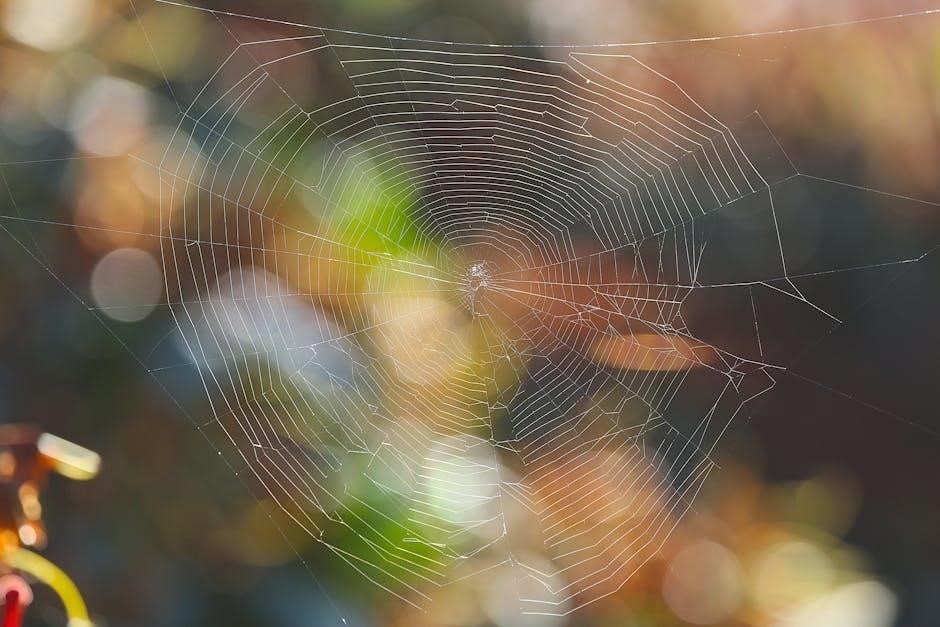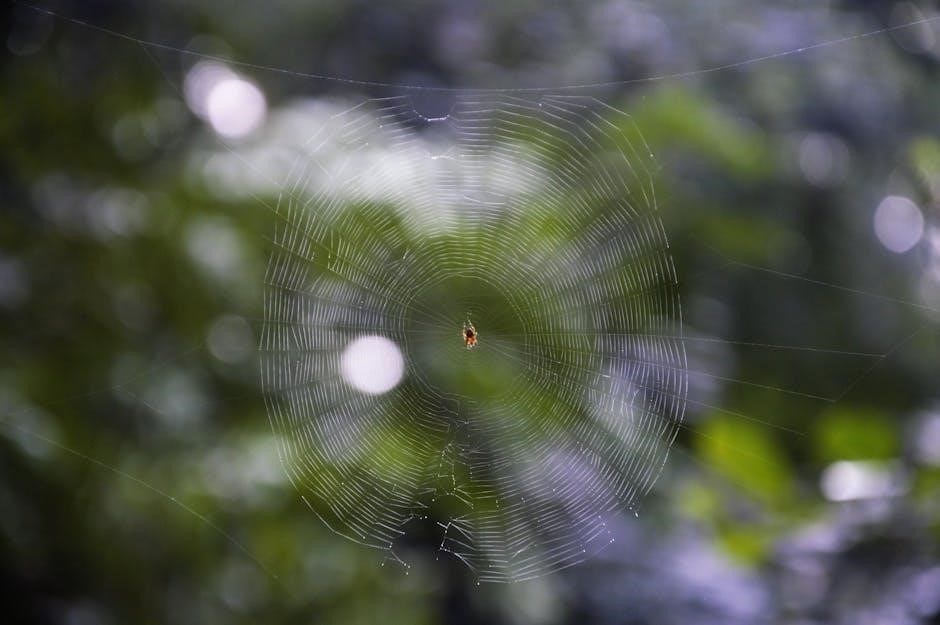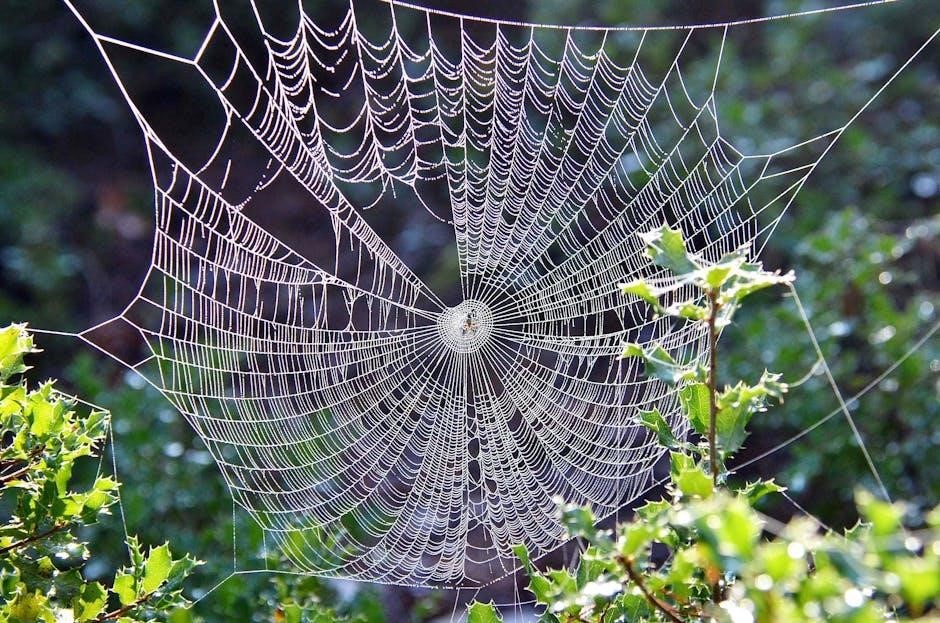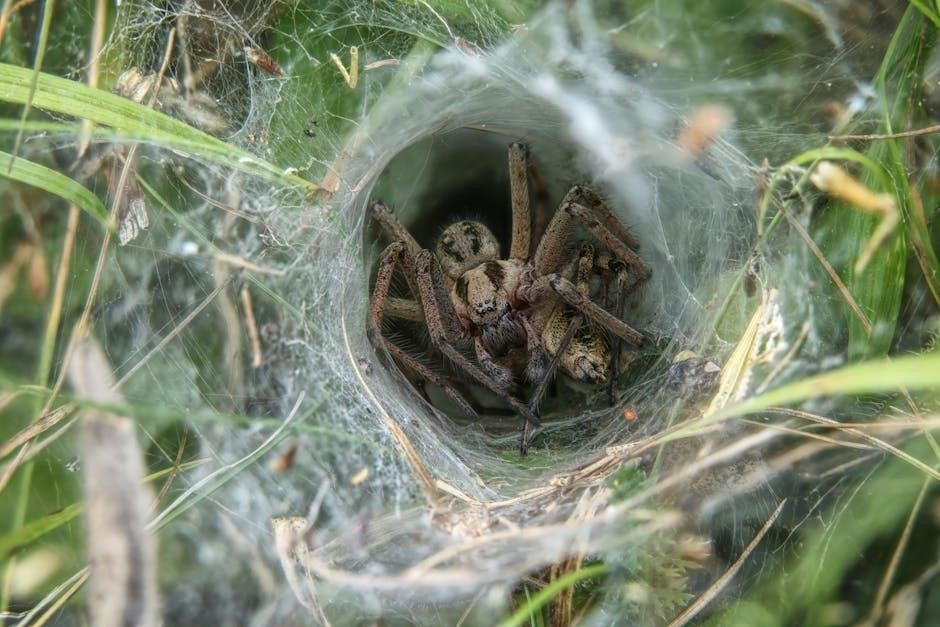Swarm trap plans provide detailed guides for constructing DIY beekeeping equipment to attract and capture honey bee swarms. These plans, often available as free PDFs, include materials lists, construction tips, and baiting strategies to ensure successful swarm attraction and colony establishment.
What Are Swarm Traps?
Swarm traps are temporary hives or bait boxes designed to attract and capture honey bee swarms. They mimic natural nesting sites, encouraging scout bees to choose them as new colony locations. Typically made from untreated wood or repurposed hive materials, these traps are sized to appeal to swarms, often around 40 liters in volume. They are equipped with entrances, ventilation, and sometimes bait frames or attractants to lure bees. Swarm traps are a cost-effective, eco-friendly way to expand an apiary by capturing wild swarms, promoting genetic diversity and sustainable beekeeping practices.
Why Use Swarm Traps?
Swarm traps are an effective way to attract and capture honey bee swarms, offering a sustainable method to expand your apiary. They provide an eco-friendly alternative to purchasing bees, allowing you to tap into local genetic diversity. By using untreated wood and natural hive parts, swarm traps mimic the scent and feel of a natural hive, making them irresistible to scout bees. This cost-effective approach not only saves money but also supports pollinator health. Swarm traps are a practical tool for beekeepers to grow their colonies while promoting environmentally responsible beekeeping practices.
Benefits of DIY Swarm Traps

DIY swarm traps offer numerous benefits for beekeepers. They are cost-effective, requiring minimal materials like untreated plywood and basic tools, making them affordable. These traps are customizable to fit specific needs, allowing beekeepers to adapt designs for better results. By using natural materials, DIY traps attract swarms more effectively, promoting genetic diversity. They also serve as a sustainable way to expand your apiary without purchasing bees. Additionally, building your own trap provides a sense of accomplishment and understanding of bee behavior. This approach is environmentally friendly and supports pollinator health, making it a practical choice for both new and experienced beekeepers.

Materials and Tools Needed
Untreated plywood, nails, hinges, and basic tools like circular saws, drills, and hammers are essential for constructing swarm traps. Detailed cut lists and hardware requirements are provided in the plans.
Wood and Plywood Requirements
Untreated plywood is the primary material for swarm traps, with 3/4-inch exterior-grade CDX plywood being ideal. Avoid treated wood to prevent chemical contamination. A single 4×8-foot sheet can yield multiple traps. Ensure the wood is natural and free of harmful chemicals to attract bees effectively. The plywood’s thickness provides durability while maintaining a manageable weight. Cutting it into pre-measured panels simplifies assembly. Natural wood scent and texture mimic hive environments, making the trap more appealing to swarms. Always follow the cut list provided in the plans for precise measurements and minimal waste.
Hardware and Fasteners
Swarm traps require durable hardware and fasteners to ensure structural integrity. Use 1-1/4″ wood screws for assembling panels, and 1-1/2″ galvanized nails for securing roofs and entrances. Aluminum flashing is ideal for protecting tops from weather. Wood glue strengthens joints, while hinges allow easy access for inspections. Consider adding latches for securing lids. All hardware should be rust-resistant to withstand outdoor conditions. Simple, sturdy fasteners ensure the trap remains durable and functional. Follow the hardware list in the plans for precise requirements, ensuring reliability and ease of assembly. Proper hardware selection is crucial for trap longevity and effectiveness in capturing swarms.
Tools for Construction
Building a swarm trap requires basic woodworking tools. A circular saw is essential for cutting plywood, while a drill and impact driver handle screwing parts together. A hammer is useful for tapping pieces into place. Measuring tapes and squares ensure accurate cuts and alignments. Screwdrivers, clamps, and sanders are also necessary for smoothing edges and securing components. Safety gear like gloves and goggles is a must. Follow the tool list in the PDF plans to gather everything needed. These tools are readily available, making the construction process accessible for DIY enthusiasts. Proper tools ensure a sturdy and effective swarm trap.

Construction Steps
Constructing a swarm trap involves cutting plywood, assembling the box, and adding entrances. Use untreated wood and follow PDF plans for durability and bee attraction.
Cutting the Plywood
Cutting plywood is the first step in building a swarm trap. Use untreated 3/4″ plywood for durability. Cut the plywood according to the plans, typically into panels for the box and lid. A circular saw with a guide ensures straight cuts. Measure carefully to avoid waste. Many plans suggest cutting multiple traps from one sheet for efficiency. Safety gear, like gloves and goggles, is essential. Sand edges to prevent splinters. Follow the cut list in the PDF for precise dimensions. Proper cutting ensures the trap fits together seamlessly, making assembly easier. Accurate cuts are crucial for a functional and attractive swarm trap.
Assembling the Trap
Assembling the swarm trap involves securing the plywood panels together. Use wood glue and screws for a sturdy structure. Attach the back, sides, and bottom first, ensuring right angles. Next, add the front panel, leaving space for the entrance. Install hinges for the lid and a latch for easy access. Follow the PDF plans for precise alignment. Sand all surfaces to smooth any rough edges. Apply a natural finish if desired, but avoid chemicals. Proper assembly ensures the trap is durable and appealing to bees. This step is crucial for creating a safe and inviting space for swarms to settle.
Adding Entrances and Ventilation
Adding entrances and ventilation is essential for creating a welcoming environment for bees. Drill a 1.5-inch hole near the base for the entrance, ensuring it’s large enough for scout bees to explore. For ventilation, cut small holes or slots in the back panel to promote airflow and prevent moisture buildup. Proper ventilation helps maintain a healthy environment inside the trap. Additionally, consider adding a slight overhang to the roof to protect the entrance from rain. These details, outlined in swarm trap plans PDFs, ensure the trap remains attractive and functional for incoming swarms, enhancing your chances of successful bee capture.

Baiting and Attracting Swarms
Use swarm attractants like pheromones or essential oils to lure bees. Add bait frames with old comb or lemon grass oil for scent attraction. Place traps in shaded, water-near areas during swarm season for optimal results.
Using Swarm Attractants
Swarm attractants mimic the scent of a queen bee, drawing swarms into traps. Products like Swarm Commander attractants or natural oils, such as lemongrass, are effective. Applying these to bait frames or inside the trap enhances attraction. Old hive parts with natural scents also work well. Place traps in shaded areas near water sources during peak swarm seasons for better success. Regular checks ensure timely transfer of bees to a permanent hive, promoting healthy colony establishment and genetic diversity.
Adding Bait Frames
Bait frames are essential for attracting swarms to your trap. Use frames with a natural scent, such as those from old hives, to create an inviting environment. Ensure frames are free of chemicals and placed strategically inside the trap. Typically, 4-6 frames are recommended, spaced evenly to mimic a natural hive setup. The frames should be positioned near the entrance to maximize scent distribution. This setup encourages scout bees to investigate and recruit others. Bait frames not only attract swarms but also provide a foundation for bees to begin building comb, signaling a promising new home.
Strategic Placement
Strategic placement is crucial for successful swarm trapping. Position traps in shaded areas, such as under tree canopies, to mimic natural hive conditions. Traps should be placed at a height of 6-10 feet above ground, as swarms often occur at this level. Proximity to water sources and food-rich areas increases attractiveness. Avoid direct sunlight, as it can deter bees. Placing multiple traps in different locations enhances chances of capturing a swarm. Ensure traps face east or southeast to capture morning sun warmth. Follow local bee behavior patterns for optimal results, as swarm preferences vary by region and season.

Optimal Placement and Positioning
Position swarm traps in shaded areas near water sources and food-rich regions. Place traps 6-10 feet high, facing east or southeast, to align with natural bee behavior patterns.
Choosing the Right Location
Choosing the right location for your swarm trap is crucial for success. Ideally, place traps in areas with ample forage and water sources, as bees are naturally drawn to these resources. Position them in shaded spots, such as under tree canopies, to mimic natural hive conditions. Avoid areas exposed to harsh winds or direct sunlight, as this can deter bees. Proximity to flower-rich regions and nectar sources increases the likelihood of attracting a swarm. Ensure the location is easily accessible for regular checks and maintenance during swarm season.
Height and Orientation
Positioning your swarm trap at the correct height and orientation is essential for attracting bees. Ideally, traps should be placed 6 to 10 feet off the ground, as swarms often cluster at this level. Face the trap east or southeast to capture morning sunlight, which helps regulate temperature. Avoid direct afternoon sun to prevent overheating. Ensure the entrance is level and stable to mimic natural hive conditions. Traps placed in shaded areas near previous swarm locations often yield better results. Stability is key, as swarms prefer secure locations free from movement caused by wind or animals.
Proximity to Water Sources
Placing swarm traps near water sources significantly enhances their effectiveness. Honeybees require water for cooling the hive and hydrating larvae, making areas near ponds, streams, or birdbaths attractive. Position traps within 300 feet of a water source to increase the likelihood of swarm capture. Avoid areas with standing water or excessive moisture, as this can lead to mold and deter bees. Ensure the trap is shaded if the water source is in direct sunlight. Proximity to water sources mimics natural hive conditions, making the trap more appealing to scout bees searching for a new home.

Monitoring and Maintenance
Regular monitoring ensures swarm traps remain effective and functional. Check traps weekly, especially during peak swarm season, to maintain cleanliness and address any issues promptly.
Regular Checks
Performing regular checks on your swarm trap is crucial for successful bee capture. Inspect the trap weekly, especially during peak swarm season, to ensure cleanliness and functionality. Look for signs of bee activity, such as propolis or wax, and check for any damage or pests. Clean out debris and old comb to maintain a welcoming environment for swarms. Ensure entrances are clear and ventilation is adequate. Regular inspections help identify issues early, preventing colony loss and ensuring the trap remains attractive to swarms. Consistent monitoring also allows timely transfer of captured bees to a permanent hive.
Identifying signs of swarm activity is key to successful beekeeping. Look for clusters of bees on the trap’s exterior, propolis or wax buildup inside, and increased buzzing around the entrance. Bees may form a tight ball near the entrance, indicating a swarm has moved in. Check for the presence of eggs or brood in the frames, as this signals an established colony. Scout bees often mark the entrance with pheromones, attracting more bees. Regular inspections during swarm season help detect these signs early, allowing timely intervention and successful transfer of the swarm to a permanent hive. Early detection ensures colony health and productivity. Transferring bees from a swarm trap to a hive requires careful planning. First, ensure the swarm has fully moved in, typically within a few days. Use a smoker to calm the bees and gently brush them into a prepared hive. Place the bait frames into the hive, ensuring the queen bee is safely inside. Add additional frames and supers as needed. Monitor the hive for activity and adjust as necessary. Proper handling minimizes stress on the bees, increasing the likelihood of a thriving colony. Always wear protective gear during the transfer to ensure safety. This step is crucial for successful beekeeping and colony establishment. Timely action ensures the health and productivity of your new hive. Regular checks post-transfer are essential to monitor the colony’s adjustment and overall well-being. By following these steps, you can securely transfer bees and maintain a healthy apiary. Proper handling and preparation are vital for a smooth transition. Bees are sensitive to disturbances, so gentle care is necessary. This process is a key part of managing swarms effectively. Using multiple swarm traps increases success rates, while seasonal timing and attractants enhance efficiency. These strategies maximize swarm capture and colony establishment effectively and sustainably. Using multiple swarm traps significantly increases the likelihood of capturing a swarm by covering more area and providing diverse locations for scout bees to discover. By placing traps in different strategic spots, such as shaded areas near water sources, beekeepers can attract swarms more effectively. Each trap should be equipped with attractants like pheromone lures or old hive parts to enhance appeal. Regular monitoring of each trap ensures prompt detection and transfer of swarms to permanent hives, maximizing the success of beekeeping efforts and expanding apiaries sustainably. Seasonal timing is crucial for successful swarm trapping, as honey bees typically swarm during spring and early summer. Aligning trap placement with the bees’ natural reproductive cycle increases the likelihood of capturing swarms. Bees are more active during these periods, and having traps ready beforehand is essential. Understanding the local swarm season and preparing traps accordingly ensures optimal results. Regular checks during peak swarm activity periods, such as every few days, are recommended to avoid missing opportunities. Proper timing also allows for the transfer of swarms to permanent hives, promoting healthy colony establishment and genetic diversity. Improving swarm trap success rates involves using proven strategies like Swarm Commander attractants, which mimic queen bee pheromones, and positioning traps in shaded, water-near areas. Natural materials such as untreated wood and old hive parts enhance attraction. Strategic placement, optimal timing during swarm season, and regular checks ensure higher capture chances. Using multiple traps increases success, while following detailed PDF plans ensures proper construction. These methods enhance effectiveness, making swarm trapping more rewarding and aiding in expanding your apiary sustainably. Common issues include improper trap sizing and material choice. Ensure untreated wood is used and traps are 40 liters in volume. Addressing these factors enhances effectiveness and success rates in swarm trapping. One of the most common mistakes when building swarm traps is using treated wood, which can repel bees. Additionally, incorrect trap sizing, such as making the trap too small or too large, can deter swarms from moving in. Placing traps in direct sunlight instead of shaded areas also reduces success rates. Furthermore, neglecting to use swarm attractants or bait frames can make the trap less appealing to scout bees. It’s also crucial to avoid improper ventilation, as this can lead to moisture buildup and discourage bees from staying. Correcting these errors can significantly improve swarm trapping outcomes. Common construction issues with swarm traps can be resolved by ensuring proper material selection and assembly. Using untreated wood and natural hive parts helps maintain the trap’s appeal to bees. Improper ventilation can be fixed by adding small holes or gaps for airflow. If the trap is too small, consider scaling up the design while keeping the volume around 40 liters. Ensure the entrance is appropriately sized, as overly large or small openings can deter swarms. Regularly inspecting the trap for squareness and structural integrity also prevents future issues. Addressing these construction problems enhances the trap’s effectiveness in attracting and retaining bee swarms. Real-world examples of swarm trap plans in action demonstrate effective results. Users report high success rates, with tools like Swarm Trap Lite proving reliable. Case studies highlight successful implementations, showcasing how these plans attract swarms and establish thriving colonies. Beekeepers worldwide share success stories of using swarm trap plans. For instance, in one season, a beekeeper placed ten traps and caught five swarms, achieving a 50% success rate. Another user reported an impressive 80% success rate using designs from Fedor Lazutins Keeping Bees With a Smile. These examples demonstrate how swarm traps effectively attract and capture swarms, providing free bees and genetic diversity. The simplicity and affordability of these traps make them accessible to both experienced beekeepers and newcomers, highlighting their practicality and effectiveness in expanding apiaries sustainably. Experience with swarm trap plans reveals key lessons for successful beekeeping. Timing is crucial, as swarms are most active during spring and early summer. Strategic placement near water sources and shaded areas significantly increases success rates. Using untreated wood and natural hive parts enhances attraction, while swarm attractants like those from Swarm Commander improve effectiveness. Regular checks during swarm season are essential to avoid missing opportunities. Beginners should start with simple designs, like the 40-liter trap, and gradually experiment with advanced strategies. These insights highlight the importance of patience, observation, and adaptability in mastering swarm trapping for a thriving apiary. Users praise swarm trap plans for their effectiveness and ease of use. Many report high success rates, with some achieving up to 80% swarm capture. Beginners appreciate the clear instructions, while experienced beekeepers value the cost-effectiveness. One user shared, “I caught my first swarm in the first season—amazing!” Others highlight the environmental benefits and genetic diversity gained from local swarms. The plans are often described as “invaluable” for expanding apiaries sustainably. These testimonials underscore the practicality and reliability of swarm trap plans in beekeeping. Swarm trap plans offer a simple, cost-effective way to expand your apiary. Download the PDFs, build your trap, and start capturing swarms today for a thriving beekeeping experience! Success with swarm traps lies in strategic placement and proper baiting. Position traps in shaded areas near water sources and use attractants like Swarm Commander products to lure bees. Regularly inspect traps during peak swarm season and transfer bees promptly to a permanent hive. Utilize untreated wood and natural hive parts to create an appealing environment. Follow detailed PDF plans for precise construction and maximize your chances of capturing swarms. With patience and the right approach, you can expand your apiary sustainably and enjoy the rewards of beekeeping. Consistency and attention to detail are key to long-term success. Expanding your apiary is simplified with swarm traps, offering a cost-effective way to capture wild swarms and introduce genetic diversity. By following swarm trap plans PDFs, you can build traps that attract robust colonies. These swarms strengthen existing hives and enhance overall hive health. Traps are especially useful for beginners, providing an affordable method to grow bee populations. Plus, they allow for sustainable beekeeping practices, promoting eco-friendly colony management. With each successful capture, your apiary flourishes, ensuring a thriving beekeeping operation for years to come. Swarm trapping is an essential tool for every beekeeper aiming to expand their apiary naturally and efficiently. For deeper insights into swarm trapping, explore free swarm trap plans PDFs and online guides. Websites like SwarmCommander offer detailed tutorials, while YouTube channels provide visual instruction. Books such as “Keeping Bees with a Smile” by Fedor Lazutin share expert tips. Beekeeping forums and communities also offer valuable advice and shared experiences. Additionally, downloadable resources like cut lists and material guides simplify the building process. These tools empower beekeepers to refine their skills and improve swarm trapping success rates, ensuring a well-informed and effective approach to expanding their apiary.Signs of Swarm Activity
Transferring Bees to a Hive

Advanced Tips and Strategies
Using Multiple Traps
Seasonal Timing
Improving Success Rates

FAQs and Troubleshooting
Common Mistakes
Solving Construction Issues

Case Studies and Success Stories
Real-World Examples
Lessons Learned
User Testimonials
Final Tips for Success
Expanding Your Apiary
Resources for Further Learning

